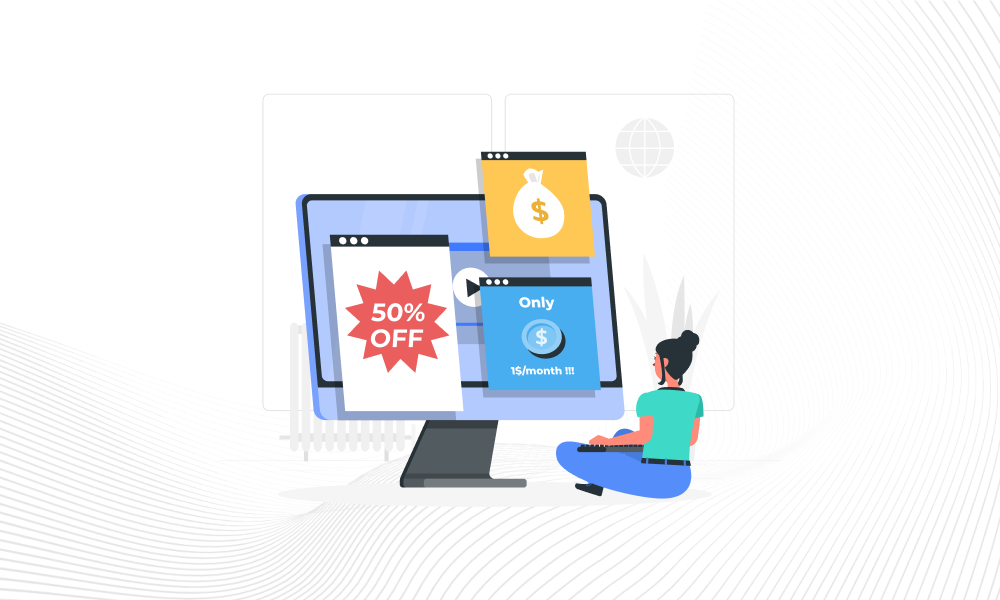
In the competitive world of e-commerce and retail, personalized product recommendations can make a huge difference in attracting customers and increasing sales. Here are the top 9 strategies you can try:
1. Analyze Purchase History
- Identify Repeat Purchases:
- Look for products that customers buy regularly. For example, if a customer frequently purchases coffee beans from your online store, recommend new blends or related coffee accessories like mugs or filters.
- This shows that you understand their ongoing needs and can encourage them to explore similar items they might like.
- Track Complementary Purchases:
- Notice which products are often bought together. If many customers who buy a laptop also purchase a laptop bag and a wireless mouse, when a new customer buys a laptop, recommend these complementary items as well.
- It helps increase the average order value by suggesting useful additions to their main purchase.
2. Monitor Browsing Behavior
- Pages Visited:
- Pay attention to which product pages a customer spends the most time on. If someone lingers on pages showing running shoes, recommend other styles or brands of running shoes, along with related items like running socks or fitness trackers.
- This indicates their current interest, and relevant suggestions can keep them engaged with your offerings.
- Recently Viewed Items:
- Keep a record of the products a customer has recently looked at. For instance, if a shopper has been checking out different types of skincare products, send them reminders or additional suggestions about those products in subsequent visits or through emails.
- It makes the customer feel that you’re paying attention to their preferences and might prompt them to make a purchase.
3. Use Demographic Data
- Age and Gender:
- Tailor recommendations based on these factors. For a young female customer, recommend trendy fashion items, makeup products, or accessories that are popular among her age group. For an older male customer, suggest products like quality watches or classic clothing styles.
- Understanding the general preferences associated with different demographics helps target the right products to the right people.
- Location:
- Consider where the customer is located. If you’re an online food store and a customer is from a region known for its love of spicy food, recommend spicy food products or local delicacies from that area.
- Localized recommendations can make the customer feel a stronger connection to your offerings.
4. Leverage Customer Ratings and Reviews
- Positive Feedback:
- Identify products that customers have given high ratings and positive reviews. Then, recommend similar products to other customers. If a particular book has received great reviews for its mystery plot, recommend other mystery novels to readers who enjoy that genre.
- This builds trust as customers see that you’re suggesting items that others have liked.
- Negative Feedback:
- Analyze negative reviews to understand what customers didn’t like about a product. If some customers complained that a certain smartphone had a short battery life, recommend smartphones with better battery performance to those who had similar concerns.
- It shows that you’re responsive to customer feedback and trying to provide better options.
5. Implement Machine Learning Algorithms
- Predictive Modeling:
- Use machine learning to predict what products a customer will be interested in next based on their past behavior and the behavior of similar customers. For example, if a group of customers with similar purchase histories started buying a new type of fitness equipment, the algorithm can recommend it to others in that group.
- These models can continuously adapt and improve as more data becomes available.
- Personalization at Scale:
- Machine learning allows you to handle large amounts of customer data and create personalized recommendations for a vast number of customers simultaneously. It ensures that each customer gets unique suggestions tailored to them.

6. Segment Your Customer Base
- Behavioral Segmentation:
- Group customers by their actions, like frequent shoppers, occasional buyers, or those who only buy during sales. For frequent shoppers, recommend exclusive deals or new product launches. For occasional buyers, offer incentives to encourage more regular purchases.
- Different strategies for different segments can better meet their specific needs and drive more sales.
- Interest-based Segmentation:
- Divide customers according to their specific interests. If you have an online hobby store, create segments for customers interested in painting, knitting, or model building, and then recommend products relevant to each interest group.
7. Create Personalized Email Campaigns
- Subject Line Customization:
- Make the subject line of your emails relevant to the customer’s recent activity or interests. For example, if a customer has been looking at outdoor gear, the subject could be “New Outdoor Gear Recommendations Just for You”.
- A personalized subject line increases the chances of the email being opened.
- Content Tailoring:
- Inside the email, showcase personalized product recommendations with images and descriptions. Include links to the recommended products to make it easy for the customer to make a purchase.
8. Offer Personalized On-site Experiences
- Homepage Customization:
- Display recommended products on the homepage based on the customer’s profile and past interactions. For new customers, show popular items relevant to their general demographics. For returning customers, feature products they might be interested in based on their history.
- A customized homepage makes the shopping experience more engaging from the start.
- Product Page Suggestions:
- On each product page, suggest related or complementary products. When a customer views a digital camera, recommend memory cards, camera bags, and tripods on the same page.
9. Test and Optimize Regularly
- A/B Testing:
- Experiment with different recommendation strategies. For example, test whether showing three recommended products or five works better in terms of click-through rates and conversions. Make changes based on the results.
- Continuous testing helps you find the most effective ways to present personalized recommendations.
- Data-driven Improvements:
- Regularly analyze data on how customers respond to your recommendations. If a certain type of recommendation isn’t getting much traction, dig deeper to understand why and adjust your approach accordingly.

By implementing these top 9 personalized product recommendations strategies, you can enhance the customer experience, boost sales, and build stronger relationships with your customers in the long run.




